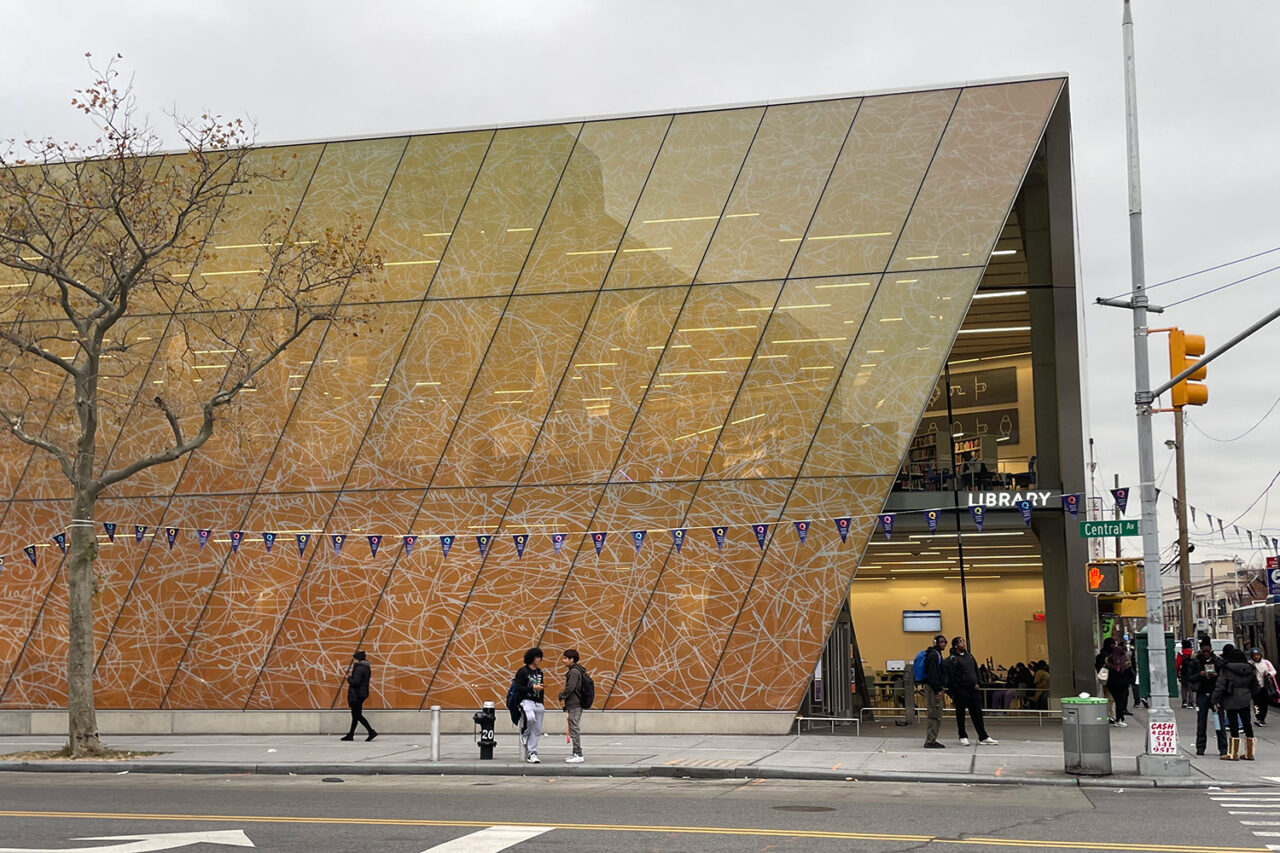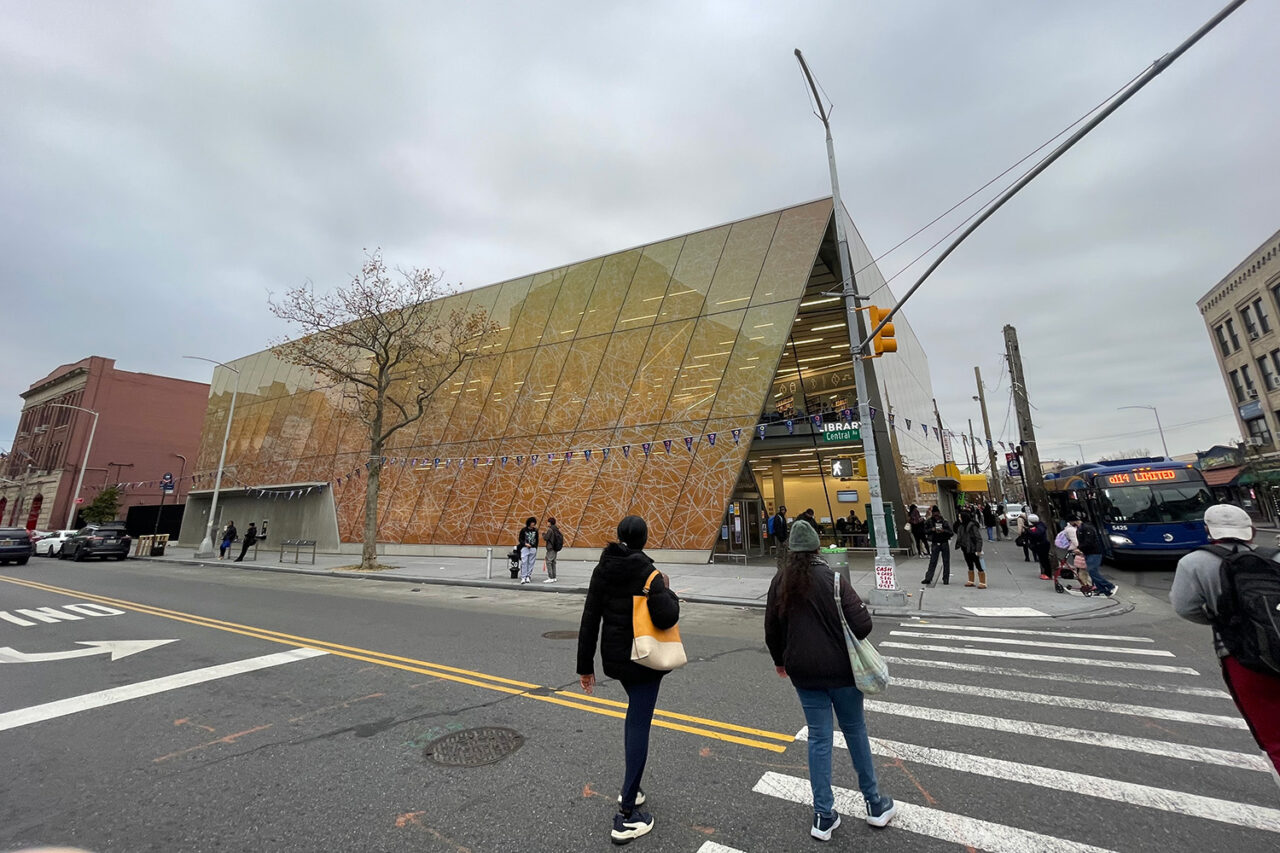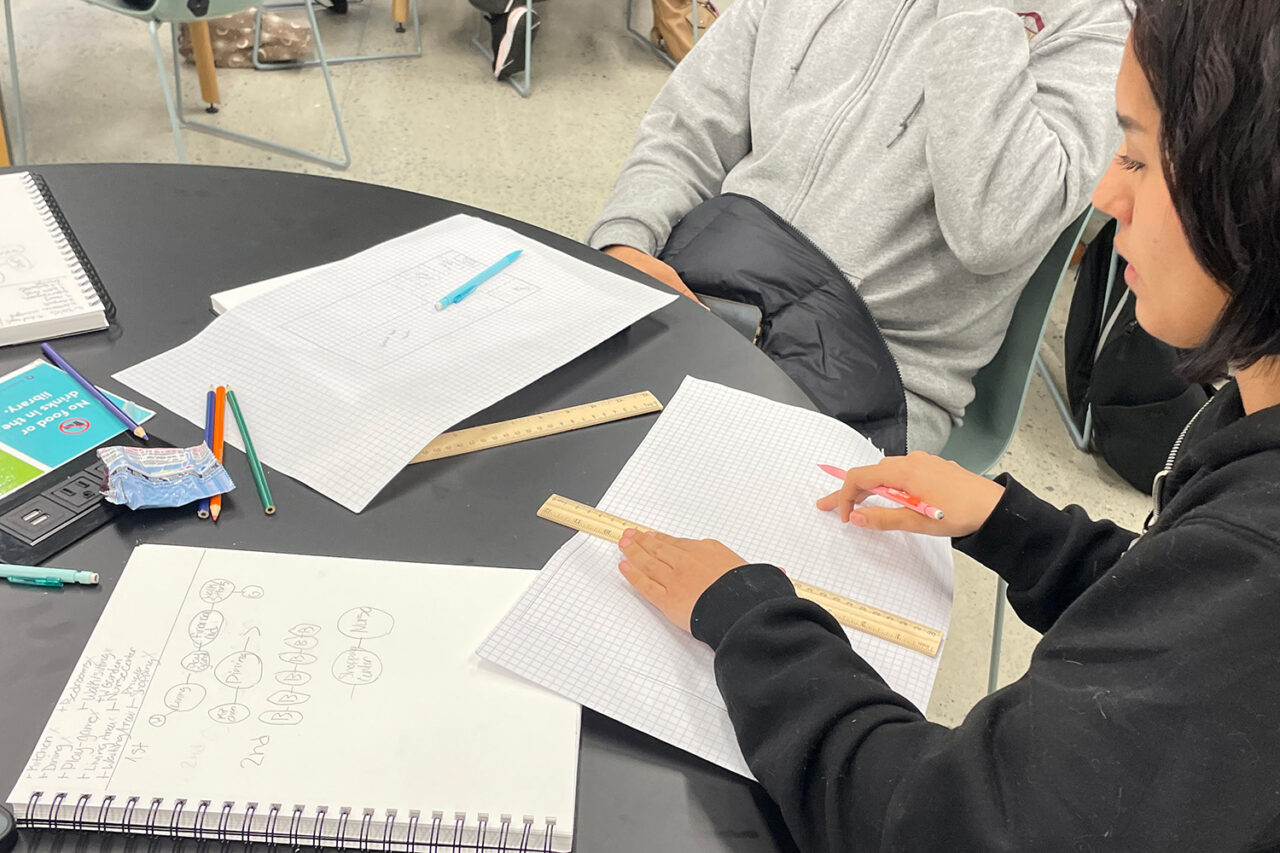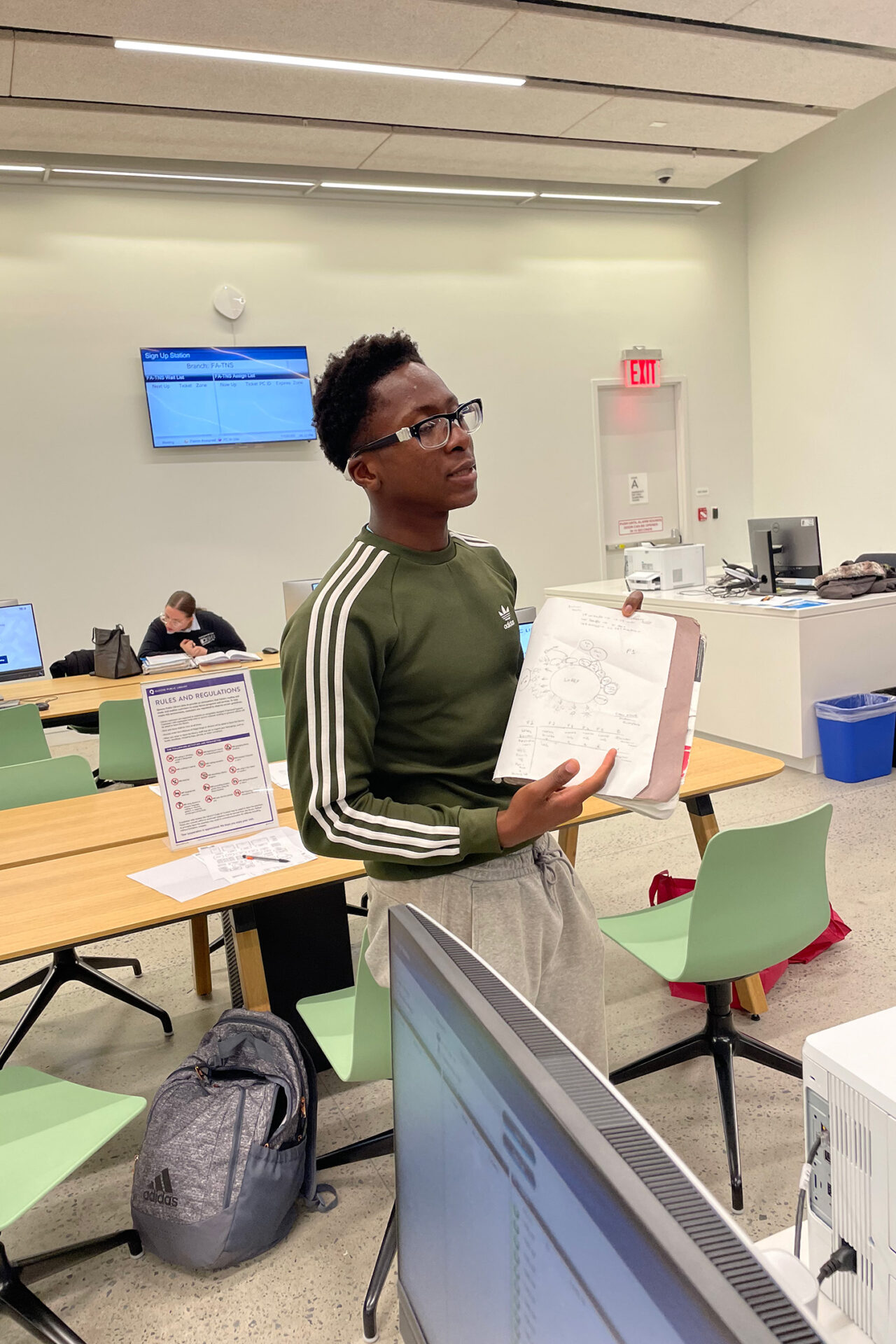by Lisa Mazzola, Director of Education
The Center for Architecture has partnered with the Queens Public to offer an opportunity for students to explore architecture and design through a social justice lens. Focused on teens ages 13–18, the after-school program is specifically designed for high school students from several schools in the Far Rockaway neighborhood, all within walking distance of the Queens Public Library, Far Rockaway branch which is the host site for this eight-session after-school program.
Far Rockaway, a community rich in history, provides a compelling backdrop for Justice by Design. Many of the students who participate in the program are deeply connected to the neighborhood and are excited to explore the past, present, and potential future of their community. Through hands-on learning, guided workshops, and mentorship from architecture professionals, the teens are encouraged to use design thinking to address real-world issues. The program aims to cultivate not only technical understanding in architecture and design but also a sense of civic responsibility and empowerment.
Center for Architecture Design Educator Jessica Castillo and Bolt Architecture’s, Ibrahim Greenidge, RA, AIA, NCARB, are mentoring students through the design process. The main project for the students this year is the development of a design intervention for a vacant lot adjacent to the library. The project challenges teens to conceptualize community-focused solutions, such as creating a new community center or designing shelters for victims of domestic violence. This initiative allows the students to engage directly with the needs of their neighborhood, using design to envision spaces that promote safety, support, and inclusivity.
Funded by Queens District Attorney Melinda Katz, Justice by Design highlights the importance of giving youth the tools to shape their environment and advocate for social justice through architecture. The teens receive a weekly stipend for their participation in the program. The fall session includes 14 students, with an additional 14 scheduled to take part in a winter/spring eight-week program in 2025. By the end of the program, participants not only have gained valuable skills but also have developed a deeper understanding of how architecture can serve as a vehicle for positive change in their community. Look out for a follow up post in spring 2025 after the culminating celebration with teens from both sessions as well as community members.



